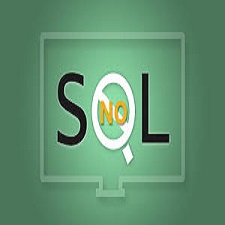توضیحات
ABSTRACT
Disposal of more than 300 tonnes waste glass daily derived from post-consumer beverage bottles is one of the major environmental challenges for Hong Kong, and this challenge continues to escalate as limited recycling channels can be identified and the capacity of valuable landfill space is going to be saturated at an alarming rate. For this reason, in the past ten years, a major research effort has been carried out at The Hong Kong Polytechnic University to find practical ways to recycle waste glass for the production of different concrete products such as concrete blocks, self-compacting concrete and architectural mortar. Some of these specialty glass-concrete products have been successfully commercialized and are gaining wider acceptance. This paper gives an overview of the current management and recycling situation of waste glass and the experience of using recycled waste glass in concrete products in Hong Kong.
INTRODUCTION
Waste reduction and recycling are very important elements in a waste management framework because they help to conserve natural resources and reduce demand for valuable landfill space. Discarded beverage glass bottles, being one of the significant municipal waste types has been a major concern in Hong Kong as only few recycling channels can be identified. Government data has shown that about 373 tonnes of glass waste is generated daily in Hong Kong, but, the recovery rate is less than 3.3% (EPD, 2010). Today, discarded waste glass already is a burden on the waste disposal facilities in many parts of the world. In most countries, generally glass bottles are just used once or a few times and then discarded. Unlike other forms of waste like paper or organic constitutes, waste glass bottles will remain stable after disposed of at landfills and it also constitutes a high proportion of the residues should incineration is used for waste treatment. Ideally, the waste glass should either be reused or remanufactured to produce new glass containers. However, due to the lack of a glass manufacturing industry, opportunities for reusing and remanufacturing of waste glass in Hong Kong are rather limited. Also, during the waste collection processes, some of the collected waste glass becomes contaminated, colour-mixed or even broken, which render them unsuitable for reusing and remanufacturing of new glass products.
چکیده
دفع بیش از 300 تن شیشه های روزانه از بطری های نوشابه پس از مصرف کننده یکی از چالش های عمده زیست محیطی در هنگ کنگ است و این چالش همچنان رو به افزایش است زیرا کانال های بازیافت محدود می تواند شناسایی شود و ظرفیت فضای دفن زباله ارزشمند اشباع شده در نرخ هشدار دهنده است. به همین دلیل طی ده سال گذشته یک تحقیق عمده در دانشگاه پلی تکنیک هنگ کنگ انجام شده است تا راه های عملی برای دفع زباله های شیشه ای برای تولید محصولات مختلف بتن مانند بلوک های بتنی، بتن خود تراکم و معماری ملات برخی از این محصولات بتن مسلح بطور موفقیت آمیز به فروش می رسند و پذیرش گسترده تر می شوند. این مقاله خلاصه ای از وضعیت فعلی مدیریت و بازیافت شیشه های زباله و تجربه استفاده از شیشه های بازیافت شده در محصولات بتنی در هنگ کنگ را ارائه می دهد.
مقدمه
کاهش و بازیافت ضایعات، عناصر بسیار مهمی در چارچوب مدیریت زباله است، زیرا آنها به حفظ منابع طبیعی و کاهش تقاضا برای فضای ذخیره سازی ارزشمند کمک می کنند. بطری های شیشه ای نوشیدنی، که یکی از انواع مهم زباله شهری است، یک نگرانی عمده در هنگ کنگ بوده است، زیرا تنها چندین کانال بازیافت می تواند شناسایی شود. داده های دولت نشان داده است که در حدود 373 تن ضایعات شیشه ای روزانه در هنگ کنگ تولید می شود، اما میزان بازیافت کمتر از 3/3 درصد است (EPD، 2010). امروزه شیشه های زباله حذف شده در حال حاضر بار در تاسیسات دفع زباله در بسیاری از نقاط جهان است. در اغلب کشورها، معمولا بطری های شیشه ای فقط یک بار یا چند بار استفاده می شود و سپس از بین می روند. بر خلاف سایر اشکال زباله مانند کاغذ یا مواد آلی، بطری های شیشه ای زباله پس از دفن در دفن زباله باقی می ماند و همچنین بخش زیادی از بقایای آن باید برای دفع زباله استفاده شود. در حالت ایده آل، شیشه های زباله باید یا برای استفاده از ظروف شیشه ای جدید مورد استفاده مجدد قرار گیرد یا دوباره ساخته شود. با این حال، به علت فقدان یک صنعت شیشه سازی، فرصت های استفاده مجدد و بازسازی شیشه های زباله در هنگ کنگ نسبتا محدود است. همچنین، در طول فرایند جمع آوری زباله، برخی از شیشه های جمع آوری شده آلوده، رنگ مخلوط یا حتی شکسته می شوند، که آنها را برای استفاده مجدد و بازسازی محصولات شیشه ای مناسب نمی سازد.
Year: 2013
Publisher : ELSEVIER
By : Tung-Chai Ling , Chi-Sun Poon , Hau-Wing Wong
File Information: English Language/ 7 Page / size: 1.04 KB
Only site members can download free of charge after registering and adding to the cart
سال : 1392
ناشر : ELSEVIER
کاری از : تانگ چای لینگ، چی سان پوون، هاو وینگ وونگ
اطلاعات فایل : زبان انگلیسی / 7 صفحه / حجم : KB 1.04


![Management and recycling of waste glass in concrete products Current[taliem.ir]](https://taliem.ir/wp-content/uploads/Management-and-recycling-of-waste-glass-in-concrete-products-Currenttaliem.ir_.jpg)




![Technology-based management of environmental[taliem.ir]](https://taliem.ir/wp-content/uploads/Technology-based-management-of-environmentaltaliem.ir_-1-150x150.jpg)
![On the interplay between environmental reporting and[taliem.ir]](https://taliem.ir/wp-content/uploads/On-the-interplay-between-environmental-reporting-andtaliem.ir_-1-150x150.jpg)
نقد و بررسیها
هنوز بررسیای ثبت نشده است.